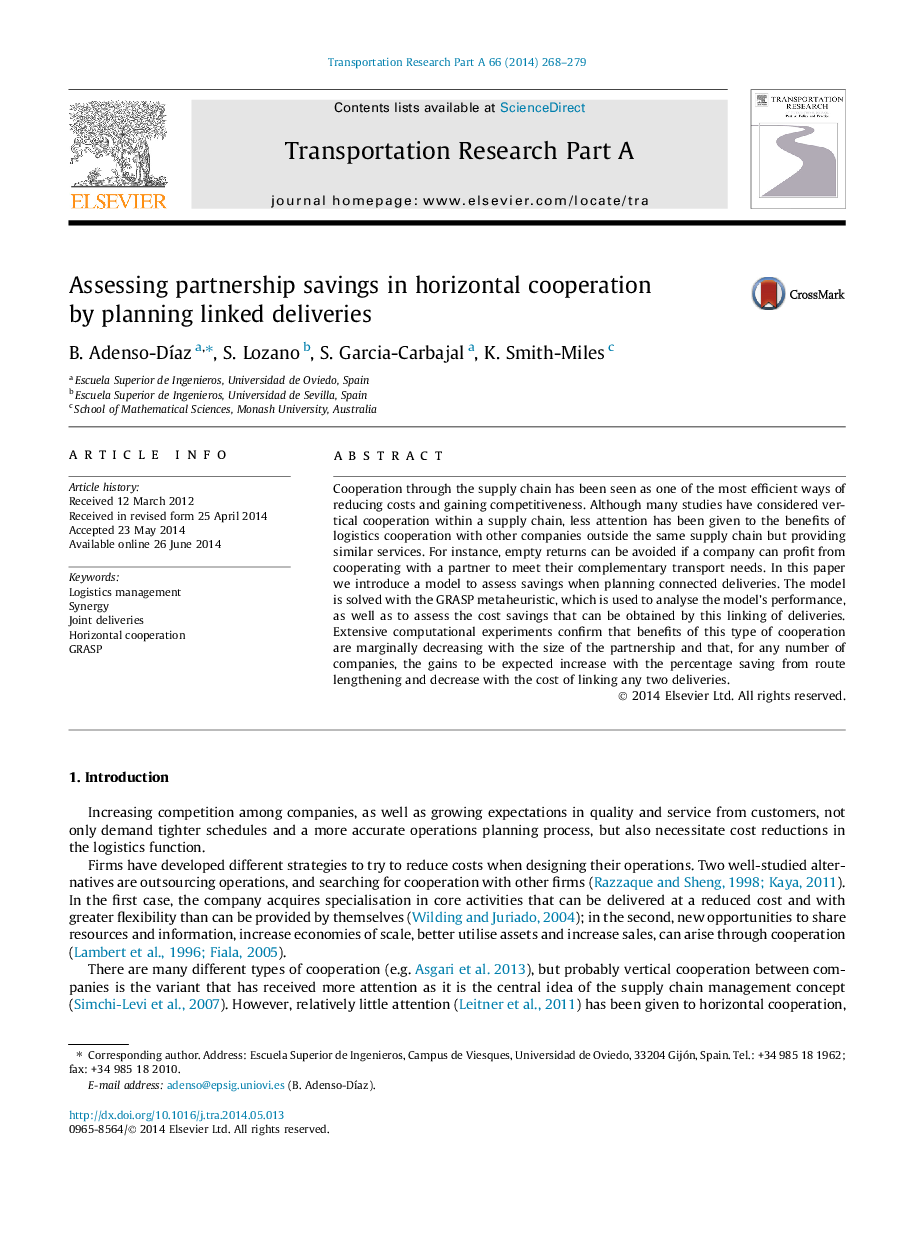| Article ID | Journal | Published Year | Pages | File Type |
|---|---|---|---|---|
| 6781761 | Transportation Research Part A: Policy and Practice | 2014 | 12 Pages |
Abstract
Cooperation through the supply chain has been seen as one of the most efficient ways of reducing costs and gaining competitiveness. Although many studies have considered vertical cooperation within a supply chain, less attention has been given to the benefits of logistics cooperation with other companies outside the same supply chain but providing similar services. For instance, empty returns can be avoided if a company can profit from cooperating with a partner to meet their complementary transport needs. In this paper we introduce a model to assess savings when planning connected deliveries. The model is solved with the GRASP metaheuristic, which is used to analyse the model's performance, as well as to assess the cost savings that can be obtained by this linking of deliveries. Extensive computational experiments confirm that benefits of this type of cooperation are marginally decreasing with the size of the partnership and that, for any number of companies, the gains to be expected increase with the percentage saving from route lengthening and decrease with the cost of linking any two deliveries.
Related Topics
Physical Sciences and Engineering
Engineering
Civil and Structural Engineering
Authors
B. Adenso-DÃaz, S. Lozano, S. Garcia-Carbajal, K. Smith-Miles,
